SOC 100 (Exam 3)
1/102
There's no tags or description
Looks like no tags are added yet.
Name | Mastery | Learn | Test | Matching | Spaced |
|---|
No study sessions yet.
103 Terms
OED Triangle
relationship between origin, education, and destination
and subsequent social mobility
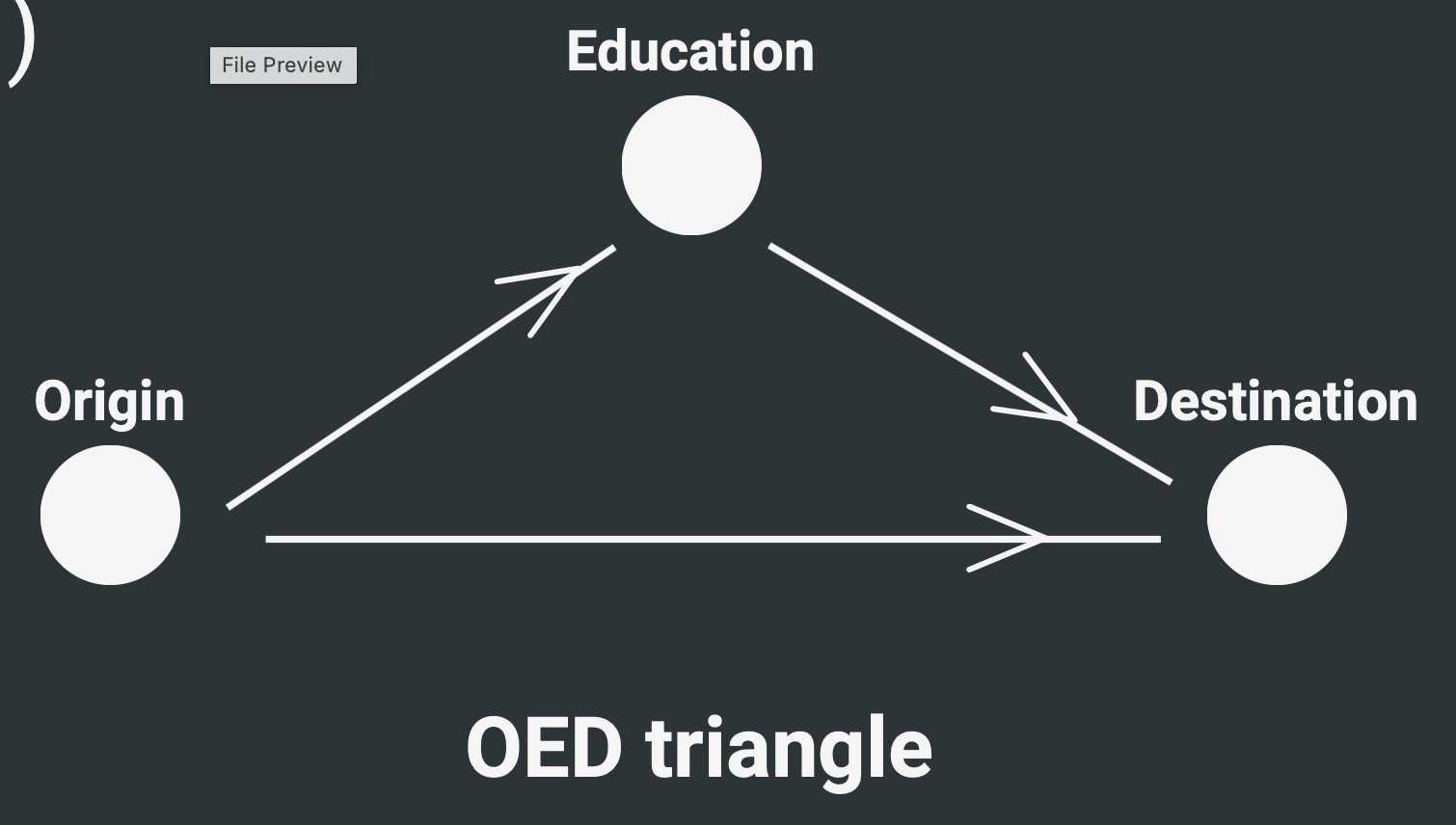
Origin
OED triangle; social background (parents’ education, occupation, SES, etc)
Education
OED triangle; an individual’s educational attainment
Destination
OED triangle; social outcomes (occupation, income, social status, etc)
Hypothesis of persistent inequalities
idea that educational systems tend to reproduce—rather than eliminate—existing social inequalities, even as educational access expands
Coleman report
schools have little influence on kids’ achievement when measured independently from inequalities at home, in neighborhood, and peer environment
limitations of report: class size, tracking, and discipline (zero tolerance, school-to-prison pipeline, etc)
Homes and education
poor children live in more unstable homes with more family disruption and violence
they have less cognitive stimulation and enrichment
they develop smaller brains (less gray matter)
Neighborhoods and education
healthy and safe environments
access to non-school resources
social capital and role models
Peer groups and education
academic norms and expectations
behavioral influence
motivation and engagement
Functions of schooling
learning/knowledge
socialization/assimilation
credentialism
hidden curriculum
Credentialism
overemphasis on credentials (e.g. college degrees) that signal social status/qualifications for job, regardless of actual skills/knowledge
reinforces educational institutions as gatekeepers to employment and social mobility
Hidden curriculum
nonacademic and covert socialization functions of schooling
College wage premium
income gap between college graduates and high school graduates
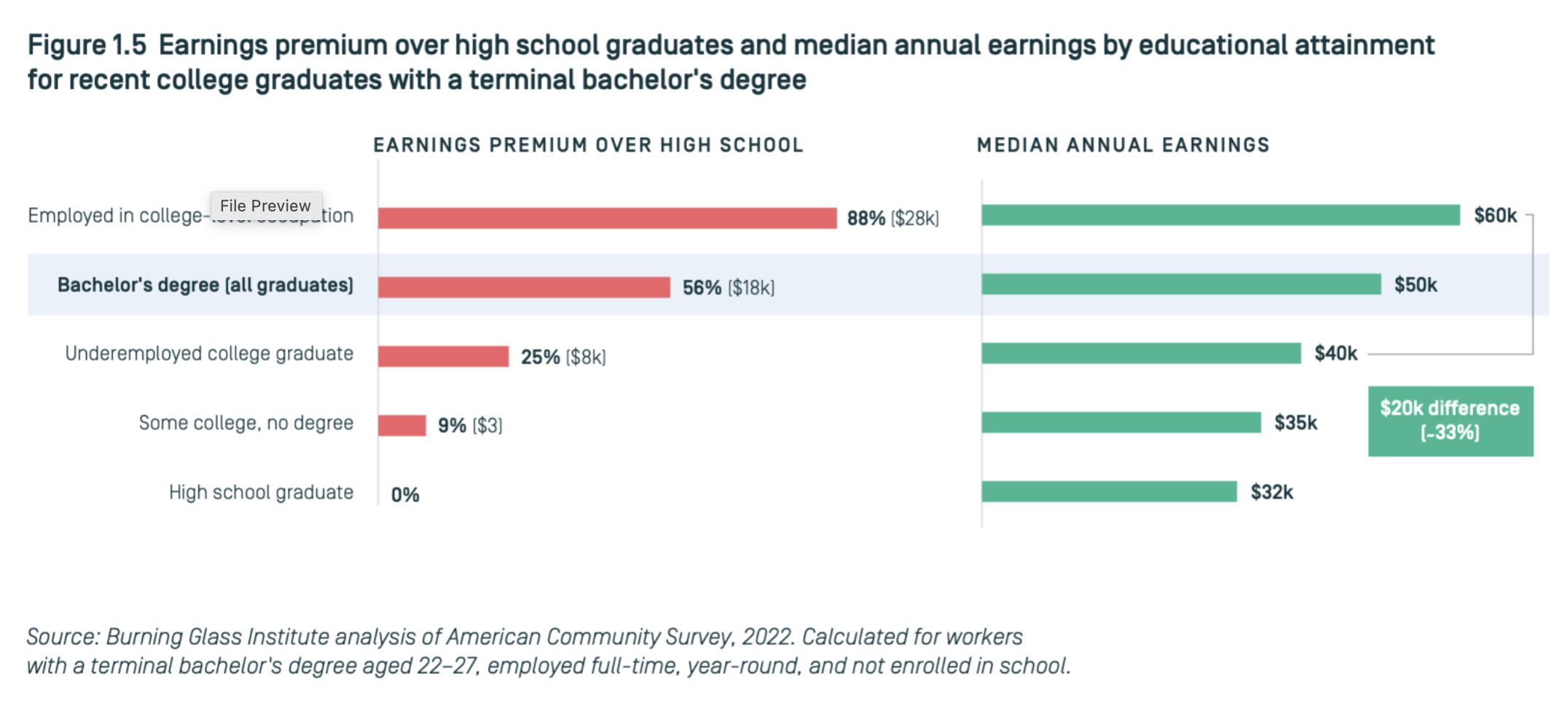
College wealth premium
gap of accumulated net wealth between a college graduate and high school graduate
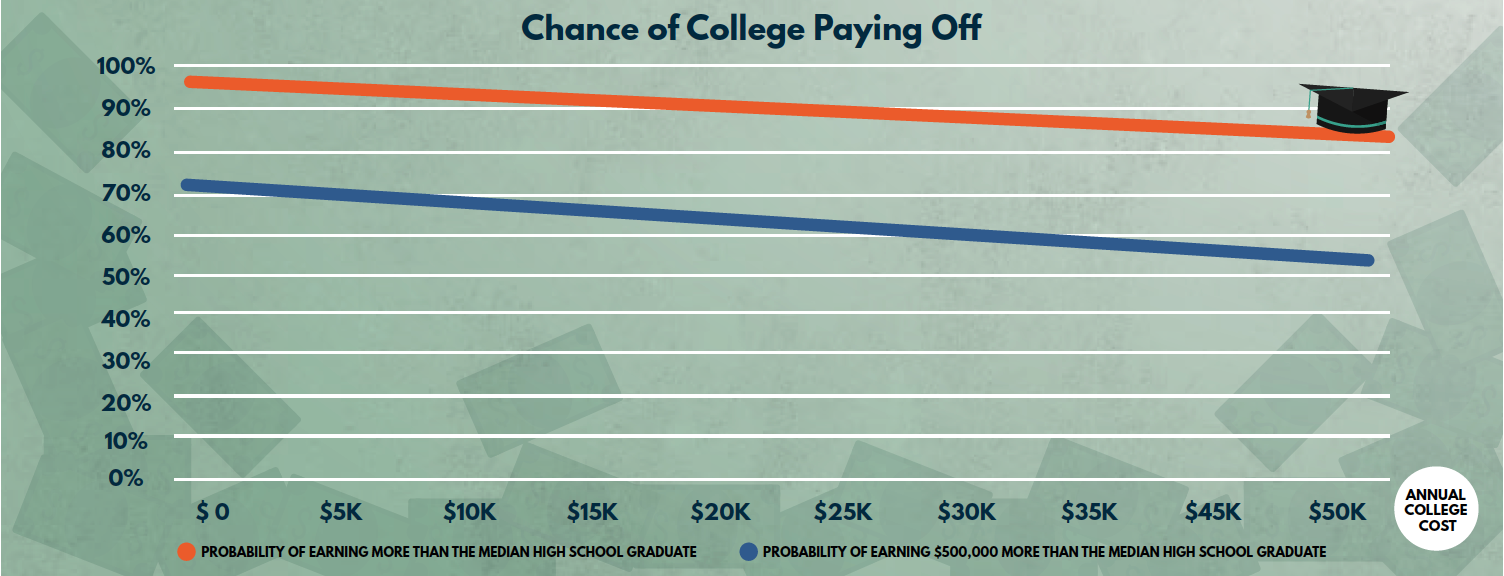
Importance of work
money
purpose
structure
relationships
personal identity
Capitalism
economic system where:
property + goods are privately owned
private decisions determine investments
competition in a free marketplace determines prices, production, and distribution of goods

Fordism
system of production pioneered by Henry Ford, which introduced the assembly line
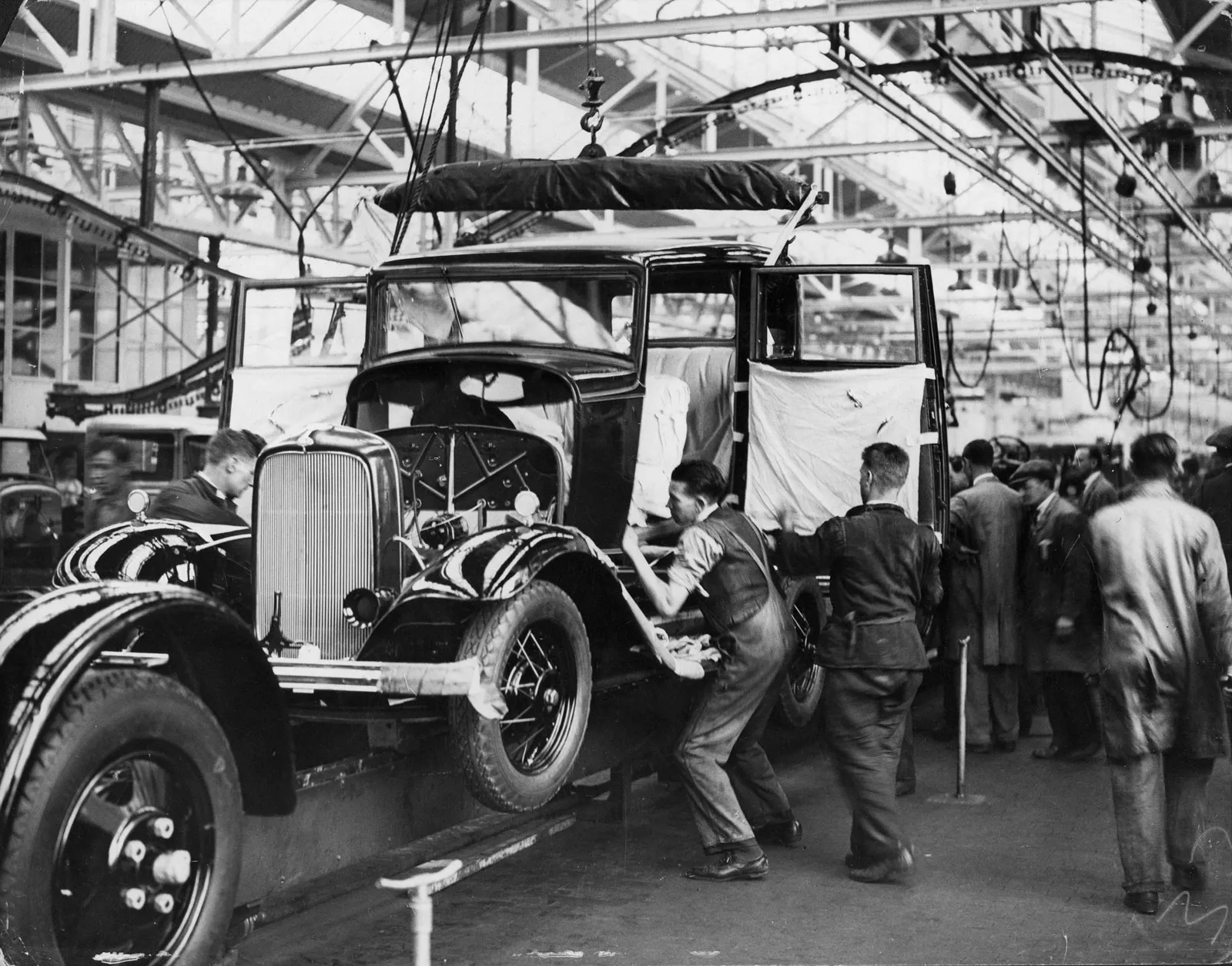
Alienation
condition where people are dominated by forces of their own creation that then confront them as alien powers; according to Marx…
basic state of being in capitalist society
counter to human nature aka creativity, control over one’s activities, cooperation with others
Workers in a capitalist society
lack ownership of the products they make
are dehumanized by tedious + demeaning labor processes
find themselves in competition over scarce jobs
Family capitalism
type of capitalism; enterprises owned + administered by entrepreneurial families
Managerial capitalism
type of capitalism; enterprises administered by managerial executives rather than owners
Welfare capitalism
type of capitalism; large corporations protect their employees from economic fluctuations
Institutional capitalism
type of capitalism; consolidated networks of business leadership where corporations hold stock shares in one another, resulting in increased concentration of corporate power
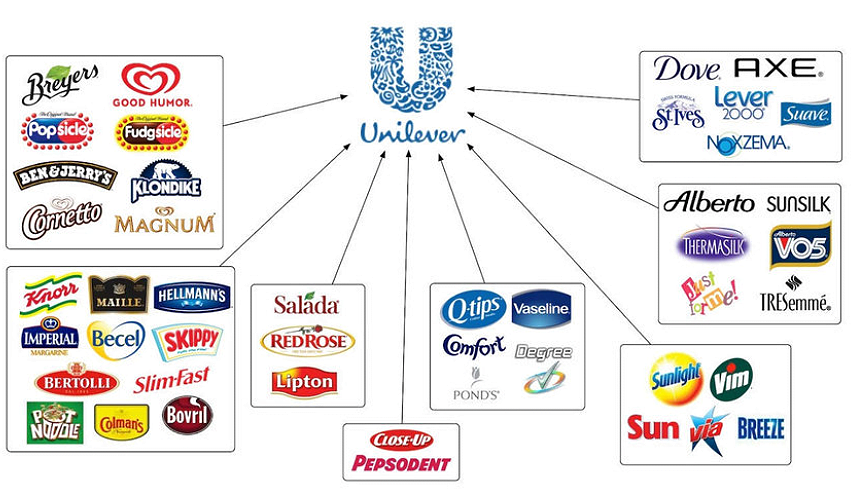
Global capitalism
type of capitalism; transnational phase characterized by…
global markets, productions, finances
transnational class whose business concerns are global rather than national
transnational systems of governance that promote global business interests
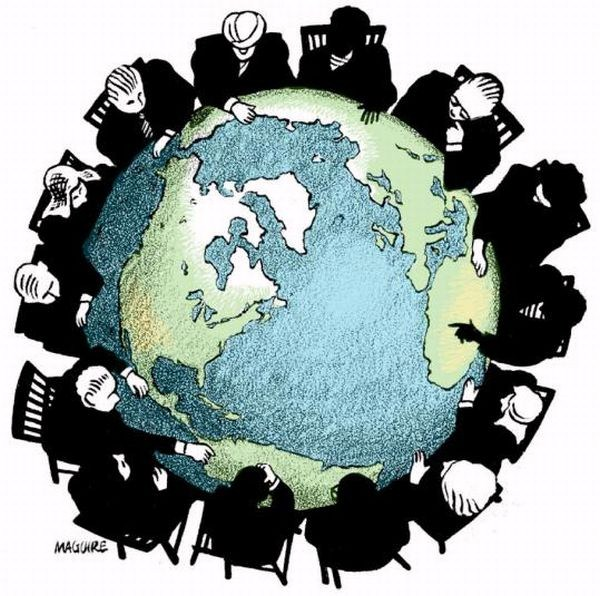
Corporation
legal entity that has legal personhood separate from its owners and shareholders
Transnational corporation
firm with power to coordinate + control operations in more than one country, even if it doesn’t own them
National
activities, policies, entities confined within a single country’s borders + pertaining to that specific nation
International
interactions, agreements, relationships between two or more countries, crossing national borders
Transnational
activities, entities, processes extending across multiple countries and operating beyond the limits of national boundaries
Market captilization
total value of shares outstanding in a publicly-traded company
Gross domestic product (GDP)
value of all goods + services produced by a country in a year
UNCDTAD Transnationality Index (TNI)
foreign sales as % of total sales
foreign assets as & of total assets
foreign employment as % of total employment
Market seeking
Why do corporations expand/extend operations outside their home countries?
locate inside market to serve it
domestic market saturated
overcome tariff and non-tariff barriers to trade
provide rapid after-sales service
respond to customer demands, tastes, preferences
Asset seeking
key resources are unevenly distributed
knowledge
labor productivity
labor controllability
wage costs
Offshoring
company moves/expands operations and jobs to overseas locations
Outsourcing
company buys goods or services previously done in-house from a supplier outside the firm
Offshore outscoring
outsourcing goods and services offshore
Informal economy
wide range of production + employment not regulated by government or taxed; term stems from early 1970s

Dualist perspective of informal economy
marginal activities
excluded from formal employment opportunities
few links to formal economy income for the poor
governments should create more jobs
Legalist perspective of informal economy
daring micro-entrepeneurs
more than mere survival
hostile legal system leads self-employed to informality
government should simplify legal procedures
Voluntarist perspective of informal economy
entrepreneurs choose to avoid regulations + taxation
not because of cumbersome registration procedures
weigh costs of (in)formality
create unfair competition for formal enterprises
Structuralist perspective of informal economy
subordinated economic units that reduce labor costs
capitalism drives informality
formal/informal closely linked
government should do more to regulate employment
Linkage of informal and formal economies
sub-contracting and direct transactions
day labor, contract workers, moonlighting
myriad services that keep cities running
Territoriality
humankind is organized into discrete territorial, political communities called nation-states
Nation
people with a common identity that ideally includes a shared culture, language, and feeling of belonging
State
political apparatus (government institutions + civil service officials) ruling over a given territorial order, whose authority is backed by law and the ability to use force
Sovereignty
within territory, states/national governments claim supreme and exclusive authority over, and allegiance from, their people
Power
ability to carry out one’s own will despite resistance
one, two, three-dimensional
One-dimensional power
ability to get people to do something through open conflict
observable conflict among competing interests
actual rather than potential power
ex:
Two-dimensional power
ability to get what you want through suppressing conflict and limited the scope of debate
confine decision-making to safe issues
suppress challenges to values + interests of the decision maker
Three-dimensional power
ability to get what you want by influencing the preferences of others
invisible influence + domination built into patterns of thought, relationships, institutional structure, cultural patterns
A shapes and determines the very wants of B
Indicators of power
Who wins?
when there are arguments over issues
Who has reputation for power?
who is identified by community surveys?
Who benefits?
who has things valued in society?
Who governs?
who sits in the seats considered powerful?
Authority
justifiable right to exercise power
charismatic
traditional
legal-rational
Charismatic
type of legitimate authority; derived from the personal appeal of a leader
ex: Jesus Christ
Traditional
type of legitimate authority; authority derived from appeals to the past/traditions
ex: monarchs
Legal-rational
type of legitimate authority; authority based on legal, impersonal rules
ex: elected leaders
Bureaucracy
legal-rational organization/mode of administration that governs according to formal rules and roles and emphasizes merit-based advancement
specialized roles + division of labor
hierarchy of authority
impersonality
formal written communication
Disadvantages of bureaucracy
red tape and inflexibility (paperwork, forms, etc)
alienation
goal displacement
limited innovation
dehumanization
Street-level bureaucrats
public service workers who interact directly with citizens through their jobs and have substantial choice in the execution of their work
deliver policy through everyday interactions
both providers of service and agents of social control
discretion/judgements have major impacts
numbers and influence increased through expansion of welfare state
Religion
system of beliefs, traditions, practices around sacred things; a set of shared stories that guides belief and action

Sacred
what inspires attitudes of awe and reverence among believers in a given set of religious ideas
sacred texts: Bible, Torah, Quran
sacred behaviors: Communion, Ramadan
sacred places: Mecca, Jerusalem, Vatican City
sacred people: Pope, Dalai Lama
Profane
what belongs to the mundane, everyday world
Theism
worship of a god/gods
ex: Judaism, Christianity, Islam, Hinduism
Ethicalism
adherence to certain principles to lead a moral life
ex: Buddhism, Taoism
Animism
belief that spirits are part of the natural world
ex: totemism
Churches
large bodies of people belonging to an established religious organization
place where religious ceremonies take place
Sect
religious movements that break away from orthodoxy
Denomination
religious sect that becomes an institutionalized body with many followers
Cults
fragmentary religious groups where individuals are loosely affiliated and lack any permanent structure
ex: Jonestown
Religion as ideology (Marx)
Sociological theory of religion
serves the ruling class interests by legitimizing social inequality
dulls the pain of oppression
encourages acceptance of suffering by promising a better afterlife
false consciousness—masks real material conditions
would wither away under communism
Religion and social change (Weber)
Sociological theory of religion
Protestantism is necessary for the emergence of capitalism
motivates people to fulfill duty to God through disciplined, rational labor
importance of predestination (heaven and hell)
Religion and social cohesion (Durkheim)
Sociological view of religion
source of social solidarity and collective conscience—shared beliefs and ideas, ways of thinking and knowing
reinforces group identity
affirms moral community
Secularism
movement away from religiosity and spiritual belief toward a rational, scientific orientation
adopted by industrialized nations through separation of church and state
Belief, belonging, and behavior
some people believe in god but don’t belong to a formal religion
some belong to a church but don’t believe
others belong but don’t attend, so don’t behave like church members
Civil religion
set of religious beliefs that society interprets as sacred
ex in US: presidential inaugurations, Pledge of Allegiance, Memorial Day, national cemeteries
Disestablishment
period during which political influence of established religions is successfully challenged
1791 ratification of Bill of Rights
migration of Catholics from 1890s-1920s
1960s-1970s and conservative reaction
Classical view of human impact on environment
impacts less apparent due to fewer people
takes for granted human domination of nature
Human exceptionalism paradigm
humans are superior to other species, exempt from ecological limits due to culture and tech; nature exists to serve human needs
Rise of environmental movement
1962: Rachel Carson publishes Silent Spring
1968: photo of Earth from the Moon
1970: first Earth Day and creation of EPA
1972: The Limits to Growth published and United Nations conference
New ecological paradigm
humans are part of, not separate from, the natural world; social systems are constrained by ecological limits
Environmental sociology
studies relationships between society and natural environment
how social factors contribute to environmental problems
how environmental issues affect society
Treadmill of Production
Marx theory; environmental degradation results from continuous economic growth driven by capitalist systems
economic success depends on constant production and consumption
prioritizes profit and growth over sustainability
increased resource extraction, pollution, and ecological harm
systemic, not individual
Inverted quarantine
anxiety about water, food, air, sun —> respond to threat with consumerism (buying sunscreen, organic foods, bottled water) and isolating from environment
Ecological modernization
environmental protection can be achieved through tech innovation and institutional reform within capitalist systems
economic development and environmental sustainability can align
green tech and policies can reduce ecological harm
markets, states, and science drive change
optimistic about solving environmental problems without radical system change
Environmental justice
framework that seeks equal protection and equitable participation in environmental policies regardless of race, class, or income
marginalized communities face disproportionate environmental burdens
emerged from grassroots activism
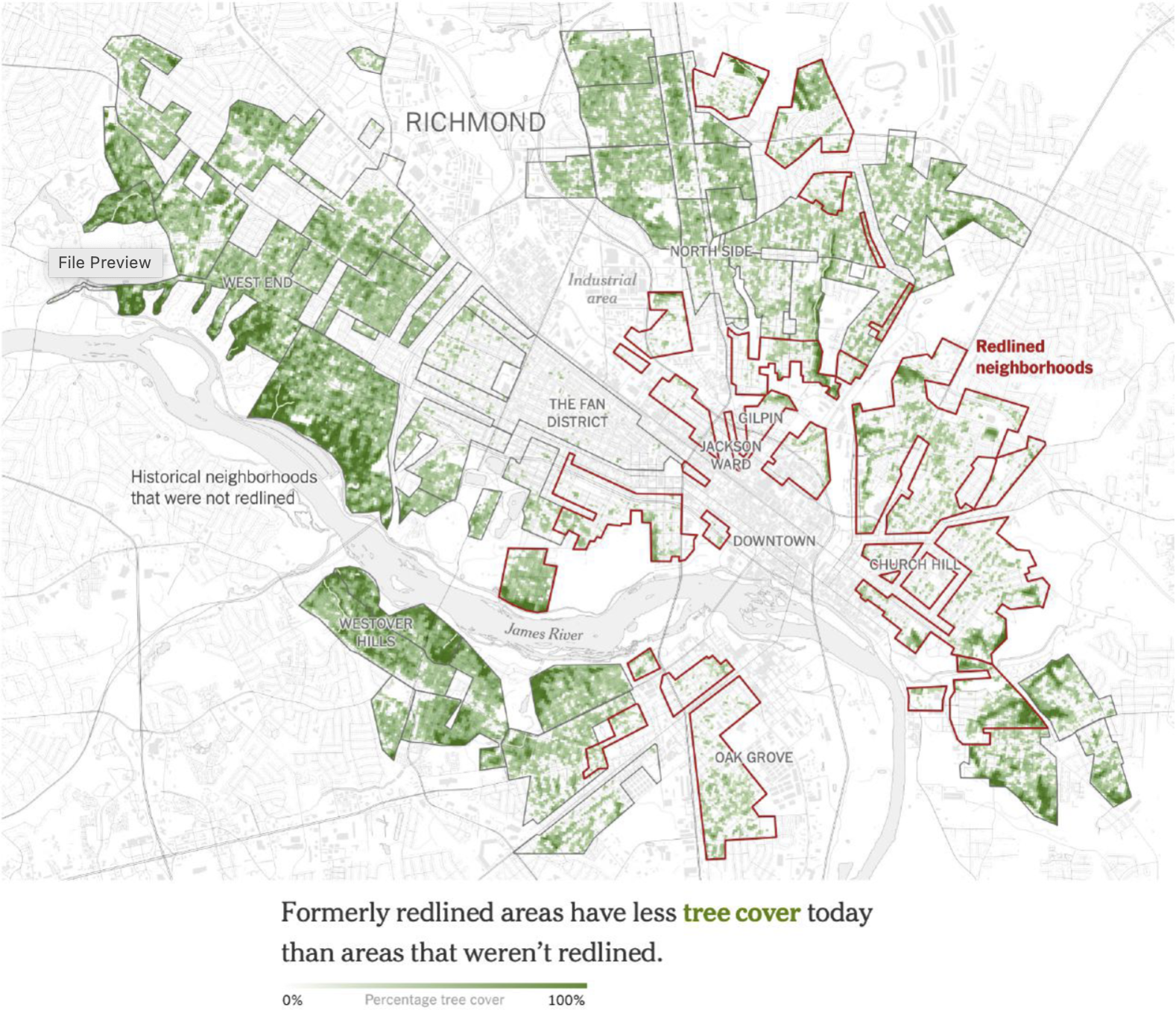
Drivers of planetary environmental change
habit loss/degradation
overexploitatino
climate change
pollution
invasive species
disease
Responses to planetary environmental change
1972: UN Conference on Human Environment
1987: WCED Our Common Future | Sustainable Development
1992: UN Rio Earth Summit | UNFCCC
1997: Kyoto Protocol (COP 3)
2015: Paris Agreement (COP 21)
2024: COP 29
Sustainable development
meeting needs of present generation without compromising the ability of future generations to meet their own needs by balancing economic, social, and environmental considerations
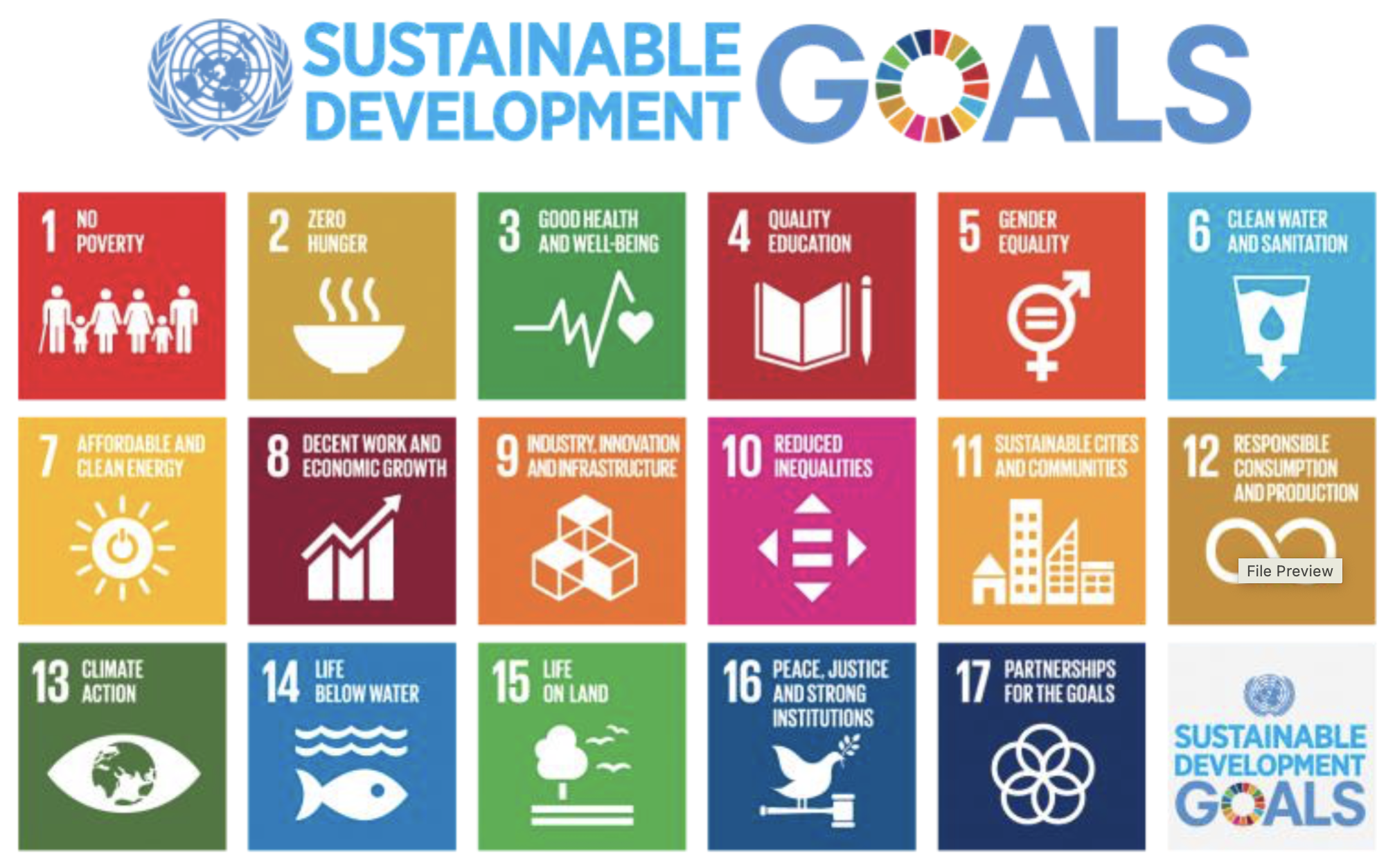
UN Framework Convention on Climate Change (UNFCCC)
goal to stabilize greenhouse gas concentrations “at a level that would prevent dangerous anthropogenic interference with the climate system”
role of industrialized countries
President George H. W. Bush did not like it
Kyoto Protocol
operationalizes UNFCCC
commits industrialized countries and economies in transition to limit and reduce GHG emissions
legally binding
US signed but never ratified
Paris Agreement
goal to lower global warming by 2 degrees C
Nationally Determined Contributions (NCDs): legally binding but not enforceable
US left in 2017, rejoined in 2021, left in 2025
Migration
process where individuals move from one location, region, country, or city to another
Migrant
person who moves away from their usual place of residence, domestic or international, for a variety of reasons
International migrant
person who has changed their country of usual residence
short-term migrant: at least 3 months but less than 1 year
long-term migrant: at least 1 year
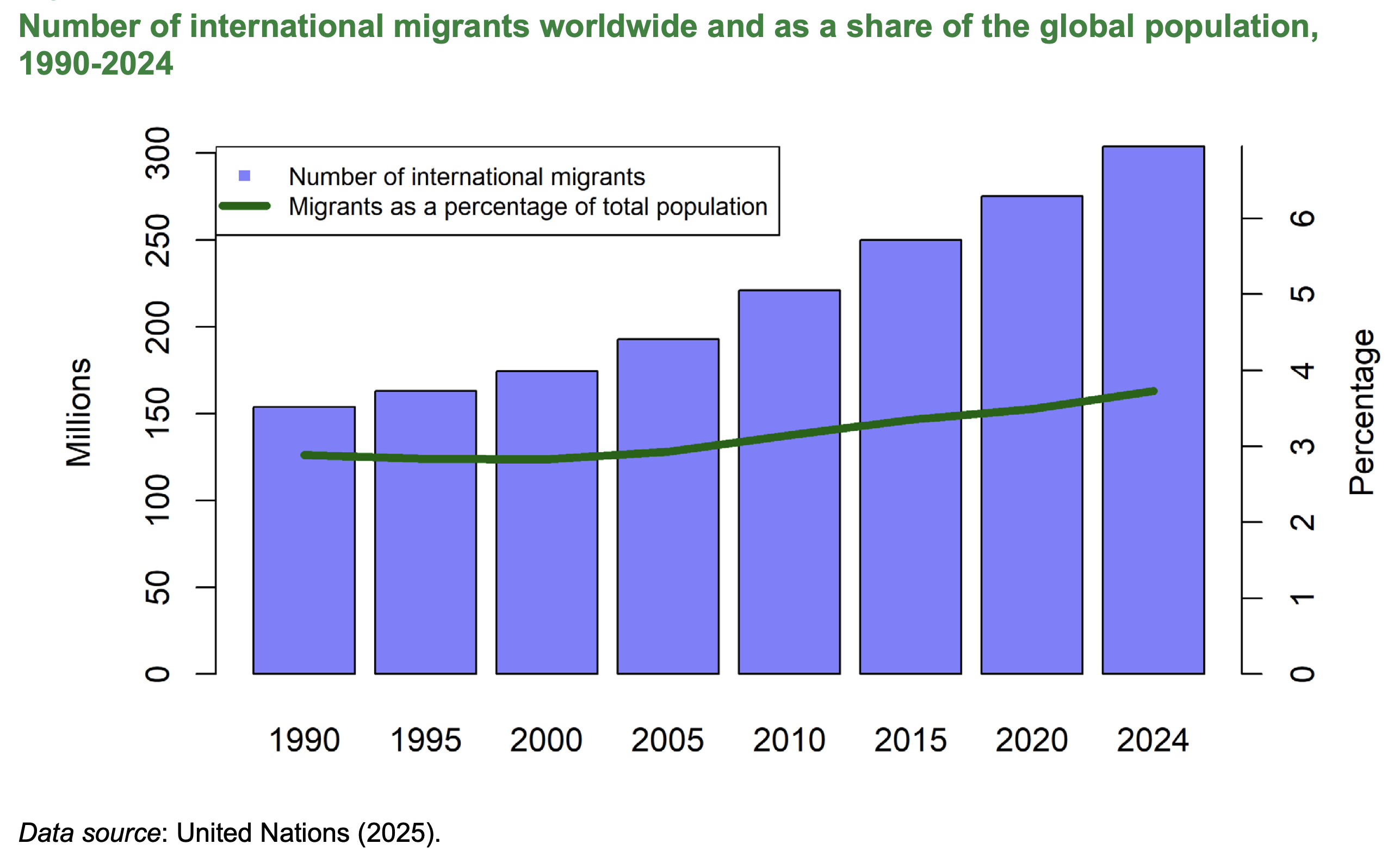
Emigration
leaving one’s country of birth to move to a new country; leaving a place
Immigration
movement of people across borders; arriving and settling in another place
Sending countries
countries where migrants originate
Receiving countries
host/destination countries where migrants go
Push-pull model
theory of immigration; migration = negative conditions that push people from their home country + positive conditions that pull them to a new one
push factors: poverty, conflict, natural disasters, lack of jobs
pull factors: better wages, education, safety, political stability
assumes individuals respond rationally to external conditions
doesn’t explain why some places have more emigration/immigration, why migrants would return, or why most people don’t migrant
Historical-structural theory
theory of immigration; migration is shaped by historical + global economic structures which create inequality between countries
reflects colonial and imperial legacies
global capitalism creates push factors
underdevelopment leads people to move for survival and better opportunities
downplays migrant agency and choice